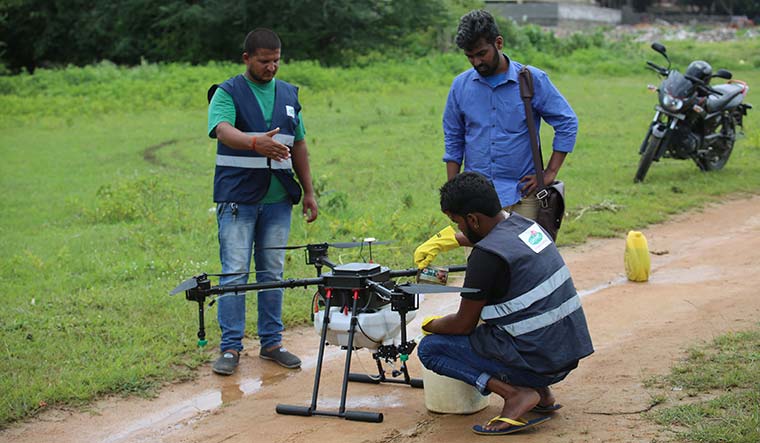In cities like Bengaluru and Chennai, infamous for their traffic jams, green corridors are created to transport organs meant for transplant. Could we transport organs without causing the city to come to a standstill?
Drones can perhaps address the logistical challenges related to organ transport. “We are looking at whether organs can be moved from place A to place B, from one hospital to another or from the airport to the hospital, using drones. If everything goes as per plan, we will be able to fly the first organ using drones in six months and we will be the first one in the country to do it,” Dr Prashanth Rajagopalan, Director, MGM Healthcare, Chennai told THE WEEK.
Drones seems like a very good option for big cities where intra-city travel logistics is a pain point, explained Dr.Goutham Kumar Mehta, Lead Consultant, Liver and Pancreas Transplant Surgeon, SPARSH Group of Hospitals. “Drones have been tried in Canada. They had once transported one of the organs for transplant in the University of Toronto,’’ he recalled, adding that drones can significantly reduce the time taken for transporting the organs.
However, it is important that a fool-proof system is developed, in which organs are transported safely every single time. “These are precious organs and we need a pretty much 100 per cent hit rate with transport. Furthermore, these organs are in the fluid and if the drones move around too much, it should not damage the organ. If there is a failure, we lose the organ. We need to ensure the organs are transported 100 per cent error-free every single time. This will be the most challenging part in my opinion,”he added.
MGM Healthcare is hopeful that drones can be used for interstate transport of organs as well. Currently, air ambulance and commercial flights are commonly used for this purpose .“Flying organs using a drone comes with a few challenges,”said Rajagopalan. Organs like heart are viable outside of body only for four hours. “Putting a heart in a box and flying it at 30 or 60 feet height at a certain speed could damage the delicate tissue. The organ could experience significant damage if not transported safely. Hence we have developed an organ transport box where, irrespective of the wind, the organ will be preserved intact, in the same healthy condition. The box has been designed exclusively for drone-based organ transplant. That’s a key breakthrough,” he said. “The prototype that we developed has been able to withstand unusual wind and moderate rain as well,” he added.
Mehta has his own concerns about using drones for long-distance organ travel. However, he believes drones can be a gamechanger in intra-city organ transport. “This will also reduce the burden on city’s traffic management personnel because every time a green corridor has to be created, a number of people have to wait in traffic and it further increases the traffic problem. Drones can be a wonderful solution for this.”
Transporting organs using drones will cost just the same as transporting them via ambulance. The drones will be controlled remotely.




